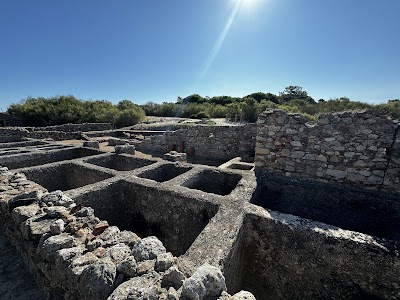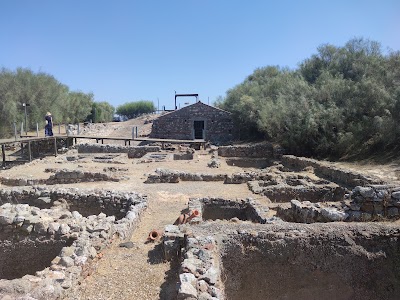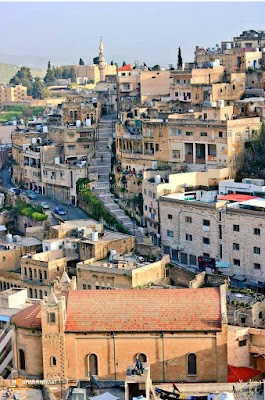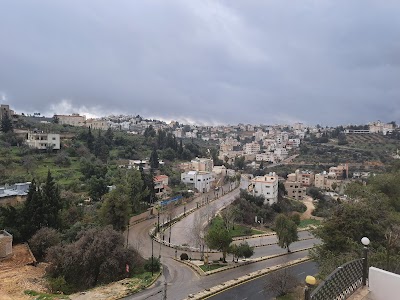Roman Ruins of Umm Qais (أم قيس)
Overview
The Roman Ruins of Umm Qais, nestled in the northern region of Mafraq, Jordan, stand as a captivating testament to ancient civilizations and their architectural magnificence. Known in antiquity as Gadara, this historical site offers visitors a unique glimpse into the past, where the influences of Roman, Greek, and Ottoman cultures intertwine to create a rich cultural tapestry. Historical Significance Once part of the Decapolis—a group of ten cities on the eastern frontier of the Roman Empire—Umm Qais holds a strategic location overlooking the Sea of Galilee, the Yarmouk River, and the Golan Heights. This vantage point provides breathtaking panoramic views that have inspired poets and artists for centuries. The city's name, "Gadara," is often associated with its reputation as a center of Hellenistic culture and philosophy, having hosted notable figures like the philosopher Menippus. Architectural Wonders As you stroll through Umm Qais, the remnants of its glorious past unfold before your eyes. The site features remarkably preserved Roman ruins, including a magnificent basilica, a theater, and colonnaded streets that showcase the architectural prowess of the era. The West Theater, an intricately crafted Roman amphitheater carved into the rock, offers excellent acoustics, highlighting the importance of public gatherings and performances in ancient Roman society. One of the key highlights of Umm Qais is the basilica terrace, a spacious courtyard flanked by impressive columns that once supported a grand colonnade. This area served as a public gathering spot, reflecting the Roman emphasis on community and civic life. Walking along the decumanus maximus, the main east-west street, visitors can easily envision the daily hustle and bustle of Gadara’s residents, merchants, and travelers who once traversed these pathways. Engineering Marvels A particularly intriguing feature of Umm Qais is its ancient aqueducts and underground water channels, which exemplify the advanced engineering skills of Roman civilization. These aqueducts were essential for supplying water to the city's inhabitants, supporting both daily life and agricultural activities in the region. While rich in Roman heritage, Umm Qais also provides insights into subsequent Byzantine and Ottoman influences. The remnants of Byzantine churches, adorned with intricate mosaics and early Christian symbolism, dot the landscape. Nearby, the charming Ottoman village showcases stone houses and narrow alleyways, offering a glimpse into the life of the region during the Ottoman period. Natural Beauty For nature enthusiasts and those seeking a tranquil escape, the surroundings of Umm Qais present a serene and picturesque landscape. The lush hills and natural springs create an ideal backdrop for picnics and leisurely walks. The nearby Yarmouk Nature Reserve boasts diverse flora and fauna, making it a perfect spot for eco-tourism and nature trails. Umm Qais is not just a treasure trove for history buffs; it is a symbol of Jordan’s rich cultural heritage. The site has been meticulously preserved and serves as a testament to the diverse civilizations that flourished in this region. The juxtaposition of ancient ruins against the pristine natural landscape offers visitors an unparalleled experience that is both educational and serene. Enhance Your Visit To make the most of your visit, consider joining a guided tour. Knowledgeable guides can provide insightful narratives about the historical, cultural, and architectural significance of the ruins. Additionally, the on-site museum features an impressive collection of artifacts, including statues, pottery, and coins, which further enrich understanding of Gadara's storied past. Practical amenities such as cafes and rest areas are available near the entrance, ensuring a comfortable visit. As you explore the site, don't miss the opportunity to capture panoramic views from the hilltops, where the ancient and modern landscapes merge seamlessly. In conclusion, the Roman Ruins of Umm Qais offer a captivating journey through antiquity. Whether you are drawn to ancient history, fascinated by architectural marvels, or simply seeking a picturesque retreat, Umm Qais promises a memorable experience. It stands as a sublime reminder of Jordan’s multifaceted history and the enduring legacy of its ancient civilizations.







